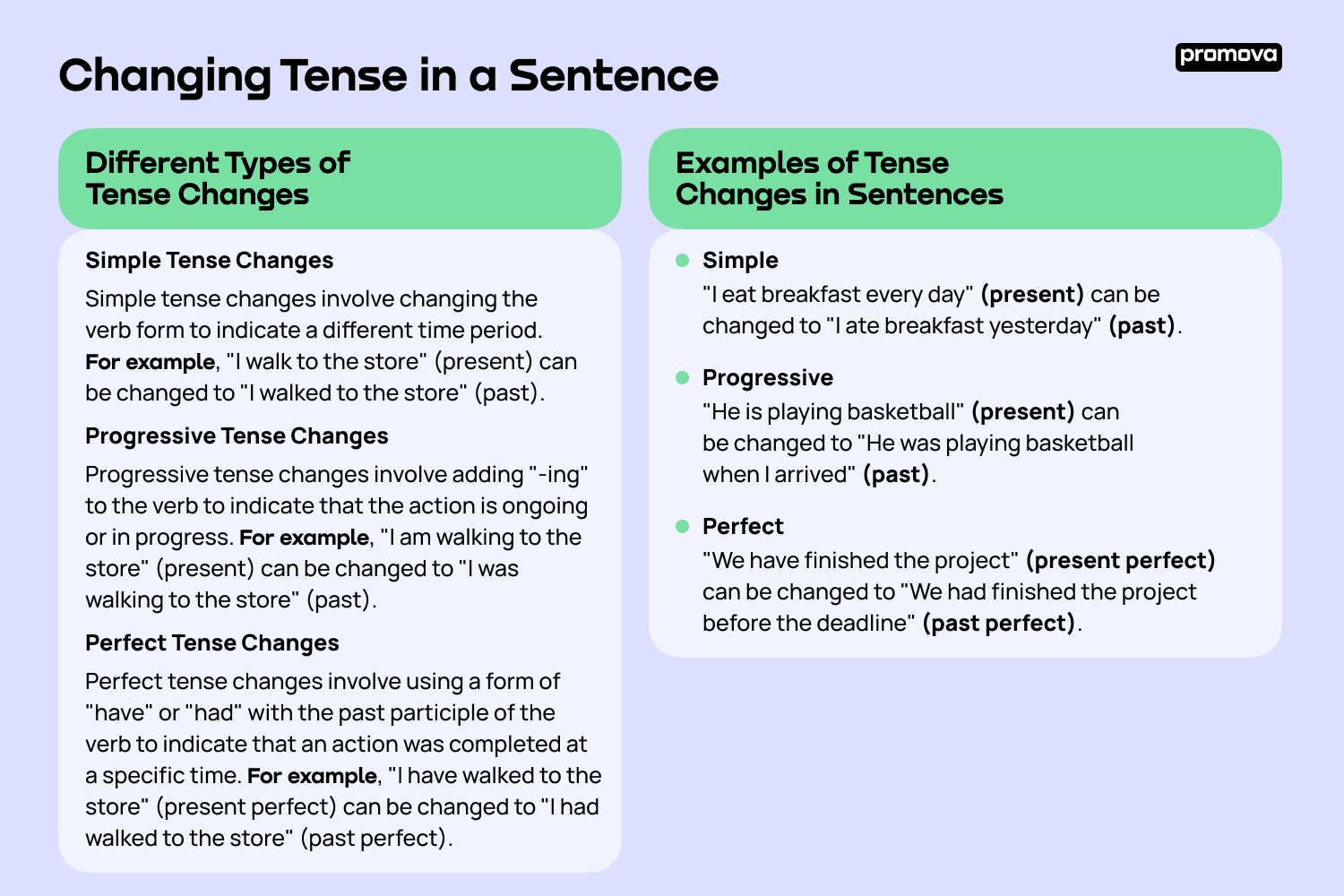Changing Tense in a Sentence
Contents
As a writer or speaker, one of the most important skills to possess is the ability to use different tenses in a sentence. In this reference, we'll explore the different types of tense changes, how to change "to be" verbs, provide examples of tense changes in sentences, and discuss the relevant grammar.
Why is it Important to Understand Tense Changes?
Tense refers to the time when an action or event occurs. It's essential to use the correct tense to convey the intended meaning of a sentence. Changing tense in a sentence can help to show the sequence of events or actions, express different moods, and emphasize the importance of certain actions. Inconsistencies in tense can create confusion for readers or listeners and affect the clarity of the message being conveyed.
Understanding the different types of tense changes can help writers and speakers to communicate more effectively and convey their intended message with precision.

Different Types of Tense Changes
There are three primary types of tense changes: simple, progressive, and perfect.
Simple Tense Changes
Simple tense changes involve changing the verb form to indicate a different time period. For example, "I walk to the store" (present) can be changed to "I walked to the store" (past).
Progressive Tense Changes
Progressive tense changes involve adding "-ing" to the verb to indicate that the action is ongoing or in progress. For example, "I am walking to the store" (present) can be changed to "I was walking to the store" (past).
Perfect Tense Changes
Perfect tense changes involve using a form of "have" or "had" with the past participle of the verb to indicate that an action was completed at a specific time. For example, "I have walked to the store" (present perfect) can be changed to "I had walked to the store" (past perfect).
7
How to Change "To Be" Verbs
"To be" verbs include am, is, are, was, and were For example, "I am walking to the store" (present) can be changed to "I was walking to the store" (past) by changing "am" to "was."
The exact form of the verb used in a sentence depends on the tense and the subject. For example, "I am walking to the store" (present) would become "He was walking to the store" (past) when changed to past tense.
Grammar Change in Tenses
Changing tense in a sentence can affect the grammar of the sentence.
So, when changing from the present tense to the past tense, the verb form changes, and "to be" verbs must be changed. It's essential to ensure that the verb tense and "to be" verbs match to avoid confusion for the reader or listener.
Examples of Tense Changes in Sentences
Here are some examples of tense changes in sentences using the three primary types of tense changes:
- Simple: "I eat breakfast every day" (present) can be changed to "I ate breakfast yesterday" (past).
- Progressive: "He is playing basketball" (present) can be changed to "He was playing basketball when I arrived" (past).
- Perfect: "We have finished the project" (present perfect) can be changed to "We had finished the project before the deadline" (past perfect).
The Rules Have Changed Speech - An Example of Tense Change in Speech
The rules have changed speech is an example of tense change in speech. It's often used when discussing a change in policy, practice, or behavior. In this speech, the speaker uses the present tense to describe the current situation and the past tense to describe the previous situation.
For example, "The rules have changed, and we now require all employees to attend training" (present) can be changed to "The rules had changed, and we required all employees to attend training" (past) to describe the previous policy.
Summary
Simple, progressive, and perfect tense changes can be used to indicate different time periods, emphasize certain actions, and convey different moods. Changing "to be" verbs is crucial when changing tense in a sentence. If you understand the grammar changes of tenses, you'll quickly and easily be able to create powerful sentences of your own. Good luck on your learning journey!
Comments